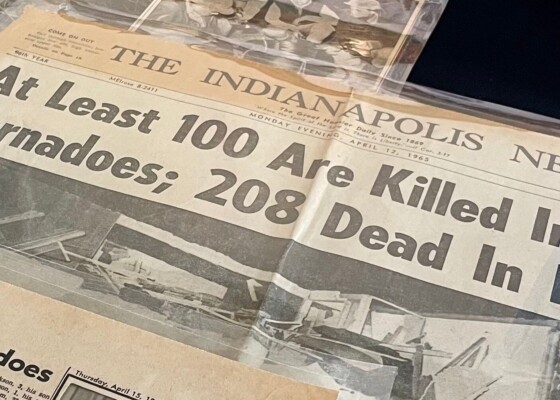Dot Product: The Cross Between Particle Theory and Pointillism
April 17, 2017Ø Up close, everything is made up of elementary particles, tiny dots. They vibrate, shimmer, dance wildly. Maybe because they’re agitated, …
Ø
Up close, everything is made up
of elementary particles, tiny dots.
They vibrate, shimmer, dance wildly.
Maybe because they’re agitated,
maybe they’re excited,
it doesn’t matter.
The countless tiny particles
that make us and fill us
are moving, always moving,
even if just a quiver.
ω
At a distance, anything
of any shape
will look like a dot, a mere point.
An insignificant dot risks
being missed
unless it is named.
And so those who explicate
have given a name—point particles—
to the near nothingness
of our elementary dancing dots.
And the explicators say
those point particles at the root of everything—
idealized—they have no structure,
have no mass.
They take up no space.
Up close
then, perhaps nothing
can look like a dot
because there is no
thing to see.
And yet—
here we are. We, who are made of quivering particles,
we have mass.
We take up space.
ℵ1
At a distance, a huddle of dots
will take shape, will take color.
Take pointillism: a technique of painting
that uses countless numbers
of colored dots, distinct and unblended dots
all on the flat plane of a raw canvas.
Point after point of pure and different color.
When viewed from afar,
the dots will be marshaled into solid shapes
by the mind:
perhaps into the shape of a proper parasol
held by a woman,
a bustled woman,
prim and detached,
a monkey at her feet,
a dog romping by her side.
In the distance, a boat at full sail,
white, billowy.
And those dots, perhaps a division
of blues, purples, oranges, and yellows,
will converge and blend into some other color—
let’s imagine into the fragrant green of a grassy field.
Form and color, forged
from the smallest dots with no structure.
ℵ2
At a distance, God is a pointillist painter
and time a ready canvas.
At a distance, the universe is a painting in one of the art galleries
and evolution a paint-by-point particles adventure.
At a distance, humanity is a palette of constrained color
and I am one dot, dancing wildly.
—Nancy Chen Long (Brown County)
This poem first appeared in Paper Nautilus.

Nancy Chen Long is a 2017 National Endowment for the Arts Creative Writing Fellow in poetry. She is the author of Light into Bodies, winner of the 2016 Tampa Review Prize for Poetry (University of Tampa Press, 2017) and Clouds as Inkblots for the War Prone (Red Bird Chapbooks, 2013). You’ll find her recent and forthcoming work in Ninth Letter, Crab Orchard Review, Alaska Quarterly Review, Pleiades, Bat City Review, and elsewhere. She works at Indiana University in the Research Technologies division. www.nancychenlong.com
Poetry Prompt: Relationship between a Scientific Theory and Art
Explore the significance of a scientific or mathematical theory (for example, String Theory, Quantum Theory, Chaos Theory, Relativity, etc.) by comparing it to some type of art, a particular work of art, or a step in the artistic process. Simplify the theory and use direct language. You may want to explore how you fit into the pictured theory.
Indiana Humanities is celebrating National Poetry Month by sharing a poem and prompt every day in April. Indiana Poet Laureate Shari Wagner selected these poems and wrote the prompts.

